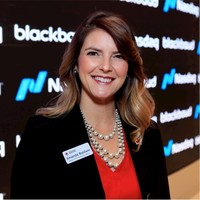Digital Engagement in the Donation Lifecycle

There is nothing new about cultivation and stewardship being the keys to a successful development plan. However, in this age of “new normal,” or “hybrid” approaches, we now have the ability and complexity of having additional platforms on which we can and should engage and empower supporters digitally.
This past year proved to us the importance of engagement and relationships with each other, organizations with which we are affiliated, and communities that we are a part of. Grandparents missed their grandchildren, volunteers missed their time helping others, and groups missed the fellowship they had with one another.
Because “necessity is the mother of invention,” we all found new ways to engage- grandparents facetimed for bedtime stories, neighbors had afternoon drinks in the cul-de-sac, and organizations found digital ways to engage with their donors and volunteers. Patrick M. Rooney, Ph.D., executive associate dean for academic programs at the Lilly Family School of Philanthropy stated, “There also may have been a digital divide in 2020 between nonprofit organizations that were able to pivot their fundraising and services to online and those that were more severely limited by the effects of the pandemic.” But thankfully those that were able to pivot succeeded! Globally, charities raised 3x more in 2020 than 2019 using JustGiving® from Blackbaud®.
Read 2021’s P2P Benchmark Study
While we can now safely gather, we know that that these new ways of engagement will continue to grow out of convenience and practicality.
Peer to peer fundraising has been a digital cultivation tool for years: by empowering current supporters to solicit their network of friends and family members to give, a charity can benefit from organic growth in new donors. However, the next step for digital engagement in the donation lifecycle is stewardship.
Sadly, only one in four peer-to-peer participants are typically retained year over year (2019 Blackbaud Peer-to-Peer Fundraising Study). But in a survey, we found that 87% of fundraisers are likely to fundraise for an organization again. The missing piece between fundraisers’ desire to continue supporting causes and their year over year retention? Stewardship. So how can charities better steward these relationships to increase retention?
One thing we know is that charities need to meet people where they are. If you found them first online, most likely that will be easiest place to meet them again and steward those new relationships as well.
How can you utilize digital platforms to reach this new donor AND fundraiser funnel so that your team can continue to prioritize donor segments that have the most value?
- The Executive Director could record a video specifically thanking the peer to peer fundraisers and speaking to the outcomes enabled by the donations raised by the peer to peer fundraisers
- Updates and outcomes could be recorded and posted on campaign pages where fundraisers and donors answered the call to action
- Marketing segments could be created according to programmatic support of peer to peer fundraisers to keep them engaged in the mission throughout the year
How can you use analytics to properly segment this new audience of supporters? New data can be overwhelming, but by identifying parameters in advance, you can organize the data to be able to work with it.
- Those who give and fundraise in your geographic area can be invited to volunteer
- Wealth analytics can identify which new donors who have the capacity to become major donors
- Persona information can identify the best ways to communicate with new donors and fundraisers according to their giving history with other organizations and activity on social media
How can you steward fundraisers just as efficiently as you steward donors?
- What benefits do you already have created for giving societies? Can you recreate that or include p2p fundraisers in those same segments?
- Can you include peer to peer fundraisers in the stewardship cadences of your major donors? Exclusive receptions, behind the scenes tours, invitations to programs/events to network with major donors, etc
- How can you involve organization leadership in the stewardship of peer to peer supporters? Department heads, board members, volunteers, etc
While the platforms and modes of communication might be new, the tried-and-true best practices on which to build these new processes is not: Keep your supporters informed and be transparent about your needs to fulfill the mission, a “thank you” goes a long way, and you’ll never know until you ASK. Today we just get to learn how to do it in new ways. And who knows? It might wind up being easier than it ever has been before.
